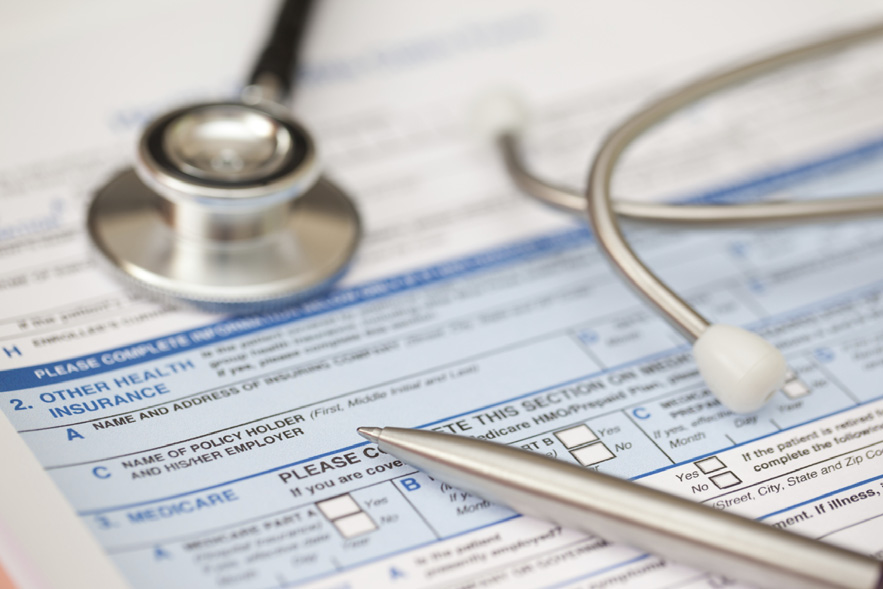The Paycheck Protection Program (PPP), enacted as part of the CARES Act on March 27, 2020, opened officially on April 3, 2020 when lenders started accepting the first round of applications.
Since that time, the rules have evolved rapidly and new statutes were enacted to add additional funding (the PPP and Health Care Enhancement Act), to make the loan forgiveness aspect more accommodating (the PPP Flexibility Act of 2020), and to extend the application deadline for additional PPP loans (the PPP Extension Act).
The rules governing the PPP also have changed rapidly. The U.S. Small Business Administration (SBA), in consultation with the Treasury Department, has issued more than 20 Interim Final Rules (IFRs), more than 48 FAQs, two loan forgiveness applications – a long form and an EZ form, and two sets of instructions to accompany the loan forgiveness applications.
We have written previously on the taxation of PPP loans and loan forgiveness, the PPP loan forgiveness process more generally, and on the interaction among the PPP and various tax credit/deferral provisions that were enacted in the CARES Act. This article focuses on merger and acquisition (M&A) transactions involving parties that have either obtained a PPP loan or claimed the employee retention tax credit (ERTC). These two benefits must be considered in all M&A transactions because they are mutually exclusive, i.e., employers can take advantage of one or the other, but not both.
There is no longer concern regarding the employer payroll tax deferral (EPTD) provision in section 2302 of the CARES Act since the President signed the PPP Flexibility Act on June 5, 2020. That legislation eliminated the linkage between PPP loan forgiveness and the EPTD provision; however, any amounts deferred under the EPTD provision should be viewed as a liability and adjusted at closing separate from working capital, i.e., it is a debt-like item .
Understanding PPP Loans’ and Employee Tax Retention Credit’s Impacts on Mergers and Acquisitions
- Employee Retention Tax Credit
- M&A Transactions
- Sellers with PPP Loans
- Buyer and Seller Both Have PPP Loans
Employee Retention Tax Credit
The ERTC is a refundable tax credit equal to 50% of certain wages paid to employees up to a maximum amount of $10,000 per employee, so the maximum ERTC for wages paid to any employee is $5,000.The ERTC is not as generous as the PPP because the PPP generally allows employers to obtain loan forgiveness on an employee’s salary in an amount up to $20,833. For this reason, employers qualifying for both provisions generally prefer to obtain a PPP loan and forego the ERTC. Employers that claim the ERTC most likely did not meet the eligibility criteria for the PPP.
If an employer received a PPP loan, it cannot also claim the ERTC. However, the ERTC is available if an employer obtained a PPP loan and repaid it by May 18, 2020, the deadline for a safe harbor period announced by the SBA .
M&A Transactions
There is an inherent conflict in M&A transactions where one party received a PPP loan and the other claimed (or intends to claim) the ERTC. This can result in unanticipated costs because the acquirer cannot claim the ERTC and hold an outstanding PPP loan. Sellers also need to consider what to do when a buyer does not want to acquire the seller’s PPP loan, or when the seller wants to realize the benefit of PPP loan forgiveness before the transaction closes .
Sellers with PPP Loans
When the seller received a PPP loan and the buyer (and its affiliates) claimed the ERTC, or vice versa, this creates a conflict that must be resolved before closing. Without further action, the combination of the parties would cause the buyer to become ineligible to claim the ERTC and the parties would need to negotiate who bears the risk of such loss. This issue has not been addressed by the IRS, and it is unclear whether the buyer would have to stop claiming the ERTC as of the closing date, or whether the buyer would have to stop claiming the ERTC as of the closing date and also repay any ERTCs previously claimed. The latter seems punitive, but not out of the realm of possibility.
Note this conflict would not exist if the seller obtained a PPP loan but returned it before May 18, 2020, the last day of a safe harbor period. The safe harbor period relates to borrowers that obtained PPP loans and had uncertainty about whether they represented accurately in the loan application that “current economic uncertainty [make the] loan request necessary to support [their] ongoing operations.”
Similarly, this conflict likely would not exist if the seller repaid its PPP loan, or obtained full loan forgiveness, before the transaction closed, although there is no guidance on this point. The former option is within sellers’ control but sellers prefer the latter option because the benefit inures solely to them; however, it comes down to a matter of timing – whether the seller can submit a loan forgiveness application and obtain a decision before the closing date.
contact a member of Withum’s SBA Financial Assistance Services Group.
The timing of these events is unknowable at present because very few lenders have opened their loan forgiveness application portals and the SBA issued on July 23, 2020 a procedural notice to lenders stating that it will not accept loan forgiveness applications until August 10, 2020, and possibly later if there are legislative amendments to the forgiveness process. The only thing we know for certain is that lenders will have 60 days and the SBA will have 90 days to consider and approve loan forgiveness applications. This allows for a process where borrowers may have to wait up to 150 days to get a decision on their loan forgiveness applications.
Practically, we expect loan forgiveness applications to be processed much faster than that, at least for loans under $2 million. The SBA has issued about five million PPP loans to date, and about 99% of them are under $2 million. Given this, we expect lenders and the SBA to automate the approvals process to a large extent, subject to a sampling and review process. For larger loans, the SBA has announced that it will review all loans in excess of $2 million for loan eligibility and other requirements.
Borrowers also should be aware there is a legislative effort under way to automatically forgive all loans under a threshold amount. The exact loan amount has yet to emerge from the legislative process, but reports indicate it could include loans up to $150,000 (covering about 86% of loans issued) or $350,000 (covering about 94% of loans issued). It would not be surprising if the threshold were set even higher given the volume of loans and the likelihood that nearly all borrowers will obtain full loan forgiveness now that the covered period has been extended from 8 weeks to 24 weeks.
So what should a borrower under a PPP loan do if it is contemplating selling its business? Let’s examine the critical path.
The first consideration is whether the sale transaction would trigger an event of default under the PPP loan agreement. Under a typical PPP loan agreement, and there is no standard form of agreement, the borrower would be in default if it reorganizes, merges, consolidates, or otherwise changes its ownership or business structure without the lender’s prior written consent. Once there is a default, the lender then has an option, without notice or demand, to require immediate payment of all amounts owing under the loan agreement. Interestingly, the borrower’s default does not automatically trigger a repayment obligation; rather, it gives the lender an option to require immediate repayment.
This suggests that borrowers should submit their loan forgiveness applications as early as possible to start the clock on the lender/SBA decision process, even if before the end of their 24-week covered period. The goal would be to receive a favorable decision on the loan forgiveness application before triggering a default and possibly a repayment obligation. The SBA allows borrowers to use a 24-week covered period and to apply for loan forgiveness before the end of their covered period, subject only to a requirement to extrapolate any wage reductions in excess of 25% to the end of the covered period.
Borrowers should provide notice to their lenders to try to obtain consent for the proposed transaction before closing. Lender consent would prevent a default. If there is not enough time for that, or they do not anticipate obtaining consent for one reason or another, then borrowers can notify their lenders of the proposed transaction and simultaneously proceed to closing, perhaps providing a second notice after closing.
This is one of those instances where lender delay favors the borrower. The longer it takes for the lender to recognize and declare an event of default, and to exercise its repayment option, the more time the borrower has to receive a favorable decision on its loan forgiveness application.
If a lender requires repayment of the loan before the borrower receives a decision on loan forgiveness, then that weakens the borrower’s case for loan forgiveness, but not completely. Prior to the enactment of the PPP Flexibility Act, the SBA issued guidance allowing for loan forgiveness even for amounts that were repaid before the borrower received a decision on its loan forgiveness application. The SBA stated that “[i]f the amount remitted by SBA to the lender exceeds the remaining principal balance of the PPP loan (because the borrower made scheduled payments on the loan after the initial deferment period), the lender must remit the excess amount, including accrued interest, to the borrower.” It is unclear whether this guidance would apply in the context of a complete loan repayment, though in the SBA’s procedural notice referenced above, it is requiring lenders to confirm in their submissions that the PPP loans have not been repaid or canceled.
The parties also need to consider seller covenants regarding the completion of the loan forgiveness application, how to allocate the expected loan forgiveness benefit between the parties, and whether an escrow should be provided in case loan forgiveness is not granted.
If the borrower is retaining the PPP loan, then it needs to factor into its loan forgiveness calculation any upcoming headcount or wage reductions, which can affect its loan forgiveness amount .
Buyer and Seller Both Have PPP Loans
The PPP allows borrowers to obtain only one loan, and the SBA has provided no guidance on business combinations. The one-loan-per-borrower rule is not in the CARES Act; it is an SBA-imposed rule that appears on the loan application and in SBA guidance. In its first IFR, the SBA posed the question: “Can I apply for more than one PPP loan?” It answered the question in part by stating that “no eligible borrower may receive more than one PPP Loan.” In FAQ #24, the SBA stated that “individual business entities cannot apply for more than one loan.” Thus, the rule appears focused on loan eligibility as of the date of application, and on the receipt of a loan from a lender, but not on the acquisition of a second loan in a business combination transaction with an unrelated borrower.
Assuming that is correct, the combination of two PPP borrowers that independently and validly obtained PPP loans should not affect loan forgiveness for either loan, subject to the discussion above regarding default and repayment of the loan before forgiveness. To minimize risk, the parties might consider delaying the business combination until after each party has spent its PPP loan proceeds, or until after each party has submitted its loan forgiveness application.
The PPP also has an affiliation rule that generally combines affiliates for purposes of determining an entity’s number of employees or whether it qualifies as a small business concern. This rule too is couched in terms of loan eligibility and nothing requires a retesting of affiliation after a PPP loan is funded. As the SBA stated in an IFR on affiliation, “a borrower will be considered together with its affiliates for purposes of determining eligibility for the PPP.” Thus, as with the one-loan-per-borrower rule, the affiliation rule does not appear to limit loan forgiveness in the case of business combinations, though the acquirer should consider covenants and an escrow in case forgiveness is not granted.
Conclusion
Businesses contemplating M&A transactions should consider the interaction between the PPP and the ERTC early in the negotiation process. The sooner these issues are considered, the sooner the parties can take steps to maximize the benefits. For larger businesses, the loss of PPP or ERTC benefits may be outweighed by other deal considerations. For smaller businesses, there may be more flexibility to alter the structure of the transaction to maximize the benefits.
SBA Financial Assistance Services






